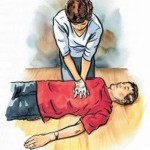Knowing how to do CPR isn’t just a handy skill to have. In an emergency, it can make all the difference between life and death. However, a lot of people seem to suffer from a ton of misconceptions when it comes to CPR. Read on to know a few so you know which facts to believe in and which ones to dismiss:
Belief #1: Only old or sick people need CPR.
Reality: Cardiac arrest can strike anyone. Whatever your race, gender or even age, you can suffer from cardiac arrest. One minute you’re doing fine and the next, you’re on the floor, struggling to breathe. Given the Centers for Disease Control and Prevention’s statistics—that someone suffers through a heart attack in the U.S. every 43 seconds—the numbers only mean that more people need to learn CPR in order to help. With U.S. News saying that about 70 percent of Americans don’t know the first thing in administering life saving measures such as CPR, there’s a lot of ground still left to cover.
Belief #2: CPR for adults is the same for kids.
Reality: While the steps are basically the same, there are important nuances you’ll need to consider. For instance, when you’re doing chest compressions, you need to exert less pressure on kids especially on small children and infants. If you don’t, you could cause internal damage, which is the last thing you want to happen.
Belief #3: You need to do mouth to mouth resuscitation all the time.
Reality: Not really. You can only carry out rescue breaths when the victim’s passage way is blocked with a barrier device. Without one, you’ll have to rely on CPR to get the job done. For many adults, CPR done with only chest compressions are an ideal life saving measure.
Belief #4: CPR always, always works.
Reality: It doesn’t. While it helps keep the blood pumping through the body, it can’t stop cardiac arrest in its tracks. However, cardiac arrests that happen out of a hospital environment only have a survival rate of 10 percent. CPR improves those odds, improving them by up to 30 percent, so long as there’s a defibrillator around to follow it up with electric shocks.
Conclusion
So lose the misconceptions. Read up on facts. And do what you can to help. If you already know CPR, but have long since forgotten the basics, it’s easy enough to get a refresher course or, in this instance, a CPR recertification class. To know more about that, call us at SimpleCPR today.




